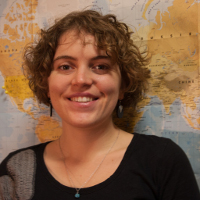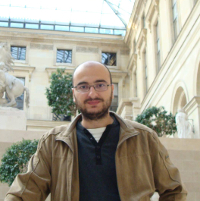|
|
|
ILP Newsletter #004 | April 2016
|
|
|
Dear friends,
This is another exciting year for the Lagrange Institute: amongst many highlights I
could mention, we are working towards Planck's final science release, LHC is
operating at design luminosity, and Lagrange Institute scientists are playing
leading roles in these collaborations. The most recent crop of outstanding Thesis
Fellows will be going on to postdoctoral positions at leading international
institutions in the fall, and our Lagrange postdoctoral fellows have done
exceptionally well in national competitions for permanent researcher positions
obtaining two out of 4 positions nationwide in particle and astro-particle physics
and one placing first amongst the reserve positions. Congratulations, Josquin Errard, Mariangela Settimo, and Paolo Francavilla!
This newletter shines a spotlight on a participatory computing led by Lagrange
Fellow Marius Millea with Cosmology@Home; on our latest Lagrange
Awardee Dmitri Pogosyan, and two of our second year Thesis Fellows, Caterina Umiltà
and Matej Pavin.
Don’t forget to keep an eye out for upcoming ILP events - some are highlighted in this newsletter. If you are
participating, we look forward to seeing you in Paris soon!
Yours scientifically,
Ben Wandelt
Director
|
|
|
|
|
News & Highlights
"The ΛCDM model is the our best description of the cosmos... right?"
Cosmology@Home attempts to answer this big question and recently released a new exciting app to do so! This app uses data from the Planck satellite and allows anyone to contribute to their current analysis.
The one sentence summary of this tool is that its sort of like turning contributing computers (yours maybe?) into mixer boards and playing DJ with the echoes of the Big Bang! So what exactly does that mean, and how these results contribute to science?
You will find out more on Cosmology@Home website.
|

|
|
|

|
Lagrange Awardee: Dmitri Pogosyan
(University of Alberta, Edmonton)
The Lagrange Institute is honoured to welcome the Professor Dmitri Pogosyan from the University of Alberta. Prof. Pogosyan will spend 6 months in Paris, from March 2016, to collaborate with ILP's teams. He plans to pursue several interlinked research directions during his stay:
"One is the study of the filamentary environments in the Cosmic Web both
theoretically and computationally. Beyond the dense halos of different masses
and empty voids, the next important ingredient of the Cosmic Web are filaments
of dense matter that emerge between the halos entering non-linear collapse.
Such filaments are transient phenomenon at a given scale, but they affect the properties of matter flowing into a forming halo and the halo structure.
At present-day galaxy cluster scales, the filamentary environment in the cluster patches is linked to much of the now observed cluster complexity. For not fully virialized clusters, it also maintains an imprint of recent cluster merger history. At high redshifts, when galaxies are formed, overdense filaments are places where gas can cool prior to reaching the virial radius, which is hypothesized to be important for disk formation and for the formation of the primordial black holes. As a theorist, I am excited that the "skeleton" theory provides the framework to address, in a unique way, new questions that add to the completion of the theory of the LSS. Among those I plan to work on is statistical study of the multiplicity of filaments linking to a galactic or a cluster halo as a function of halo properties. I will work on theoretical predictions on multiplicity and on comparison of new multiplicity statistic between cosmological models and real or simulated observations. This project leads to a more general perspective - the question how the properties of the present date astrophysical object are encoded in the Lagrangian patch of matter from which they are assembled.
I am currently also interested in non-Gaussian predictions of the inflationary models for configuration space geometrical statistics of the cosmological perturbations as reflected both in density inhomogeneities and Cosmic Microwave Background anisotropies. The aim is to merge our previous theoretical advance in describing non-Gaussian geometrical statistics (Minkowski functionals being simple example, but also peak statistics, local skeleton properties) through arbitrary order moment expansion with robust technology of computing necessary moments in wide class of inflationary models."
|
|
Focus on ILP's Fellows
Caterina Umiltà, Ph.D. Thesis Fellow at IAP
Born in Italy, I carried on my studies at the University of Bologna, where I obtained a master degree in Astrophysics and Cosmology in 2014. Later that year, I joined the Lagrange Institute and came to Paris to work on my PhD project at the Institut d’Astrophysique de Paris where I work with Karim Benabed and Jean-François Cardoso.
The earliest picture we have of the universe is the Cosmic Microwave Background (CMB), which comes from the initial stages of evolution of the universe, at the epoch of the first recombination of atoms and electrons, after which the universe becomes transparent to light. The CMB has an almost perfect black body spectrum: the small deviations that we see, called anisotropies, are the imprint of the perturbations present at the recombination epoch and thus are the object of many cosmological studies.
The Planck satellite, launched in 2009, observed the whole sky at the microwave frequencies in order to map the CMB. However, the CMB is obfuscated by other emissions (foregrounds), such as for example galactic dust, which have to be subtracted before analysing the CMB maps. Modeling and removing these foregrounds from the maps is a crucial step for the cosmological analysis of the data. Thus my project is to improve the current foreground removal technique and to better characterize the foreground residual content in the maps, in order to increase the cosmological value of Planck data.
|

|

|
Matej Pavin, Ph.D. Thesis Fellow at LPNHE
I was born in eastern Croatia and since young age I have been interested in physics. In July 2014, I received my master's degree in particle physics from the University of Zagreb. My master's thesis topic was "Lambda hyperon production in proton-carbon collisions". Hadron production measurements are important part in predicting the neutrino fluxes for the T2K (Tokai to Kamioka) experiment in Japan.
Since October 2014, I have joined T2K group at the LPNHE in Paris and started my PhD under the supervision of Boris Popov. At present my work includes analyzing the data produced by impinging protons on the 90 cm long graphite target at the NA61/SHINE experiment at CERN. The results then will be used to constrain neutrino flux in the T2K experiment. Also I will continue to develop a generic tool based on the ROOT Virtual Monte Carlo, which has been developed by the T2K group at the LPNHE. This tool will be used for the precise neutrino flux prediction in the on-going and future long-baseline neutrino experiments.
|
|
|
|
|
|
|